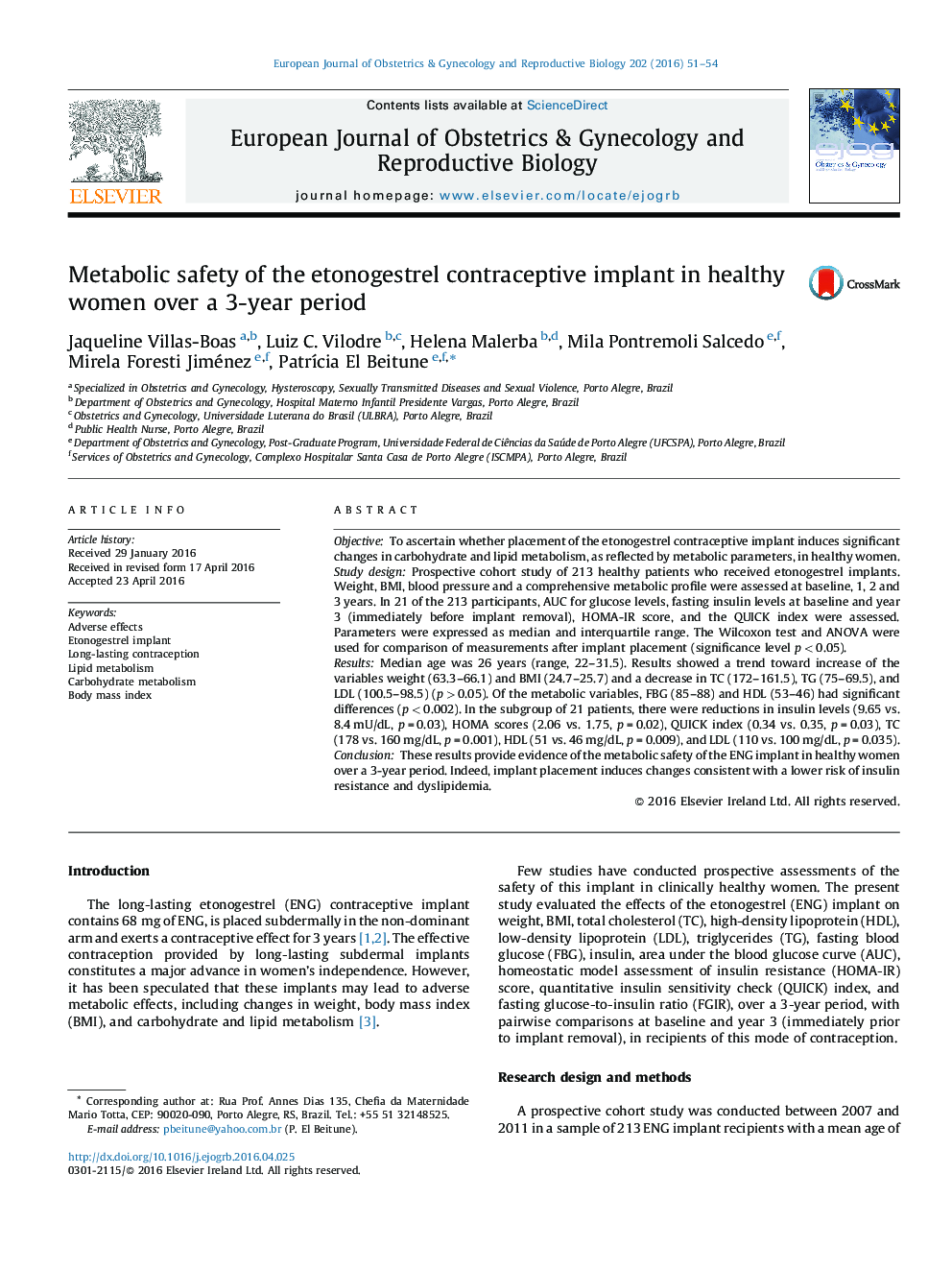| Article ID | Journal | Published Year | Pages | File Type |
|---|---|---|---|---|
| 3919215 | European Journal of Obstetrics & Gynecology and Reproductive Biology | 2016 | 4 Pages |
ObjectiveTo ascertain whether placement of the etonogestrel contraceptive implant induces significant changes in carbohydrate and lipid metabolism, as reflected by metabolic parameters, in healthy women.Study designProspective cohort study of 213 healthy patients who received etonogestrel implants. Weight, BMI, blood pressure and a comprehensive metabolic profile were assessed at baseline, 1, 2 and 3 years. In 21 of the 213 participants, AUC for glucose levels, fasting insulin levels at baseline and year 3 (immediately before implant removal), HOMA-IR score, and the QUICK index were assessed. Parameters were expressed as median and interquartile range. The Wilcoxon test and ANOVA were used for comparison of measurements after implant placement (significance level p < 0.05).ResultsMedian age was 26 years (range, 22–31.5). Results showed a trend toward increase of the variables weight (63.3–66.1) and BMI (24.7–25.7) and a decrease in TC (172–161.5), TG (75–69.5), and LDL (100.5–98.5) (p > 0.05). Of the metabolic variables, FBG (85–88) and HDL (53–46) had significant differences (p < 0.002). In the subgroup of 21 patients, there were reductions in insulin levels (9.65 vs. 8.4 mU/dL, p = 0.03), HOMA scores (2.06 vs. 1.75, p = 0.02), QUICK index (0.34 vs. 0.35, p = 0.03), TC (178 vs. 160 mg/dL, p = 0.001), HDL (51 vs. 46 mg/dL, p = 0.009), and LDL (110 vs. 100 mg/dL, p = 0.035).ConclusionThese results provide evidence of the metabolic safety of the ENG implant in healthy women over a 3-year period. Indeed, implant placement induces changes consistent with a lower risk of insulin resistance and dyslipidemia.
